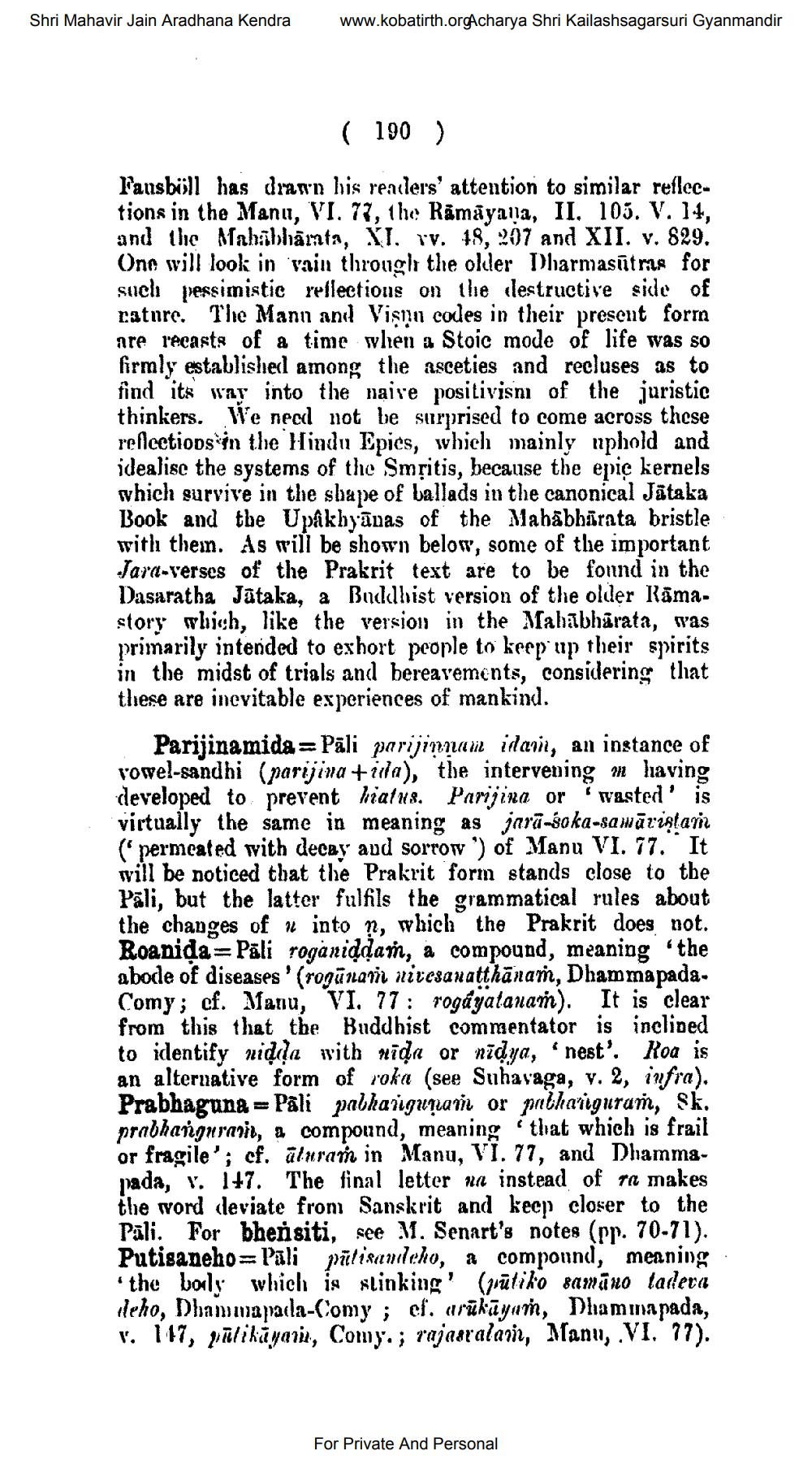________________
Shri Mahavir Jain Aradhana Kendra
www.kobatirth.orgAcharya Shri Kailashsagarsuri Gyanmandir
(190)
Hausböill has drawn his reailers' attention to similar reflections in the Manu, VI. 77, the Rāmāyana, II. 103. V. 14, and the Mahabhämta, XI. iv. 18, 207 and XII. v. 829. One will look in vain through the older Dharmasūtnis for such pessimistic rellections on the clestructive side of rature. The Mann anul Vişnn codes in their present form are recasts of a time when a Stoic mode of life was so firmly established among the asceties and recluses as to find its way into the naive positivism of the juristic thinkers. We need not be surprised to come across these reflections in the Hindu Epies, which mainly uphold and idealise the systems of the Smritis, because the epiç kernels which survive in the shape of ballads in the canonical Jätaka Book and the Upåkhyānas of the Mahabharata bristle with thein. As will be shown below, some of the important Jaro-verses of the Prakrit text are to be found in the Dasaratha Jātaka, a Buddhist version of the older Räma. story which, like the version in the Mahabharata, yas primarily intended to exhort people to keep up their spirits in the midst of trials and bereavements, considering that these are inevitable experiences of mankind.
Parijinamida=Pāli parijinzani idani, an instance of vowel-sandhi (parijina tila), the intervening n liaving developed to prevent hiatus. Pamjina or tested' is virtually the same in meaning as jara-soka-sawāristan (permcated with decay aud sorrow ') of Manu VI. 77. It will be noticed that the Prakrit form stands close to the Pāli, but the latter fulfils the grammatical rules about the changes of into , which the Prakrit does not. Roanida= Päli roganiddam, à compound, meaning the abode of diseases' (rogünam aircsanatthānam, Dhammapada. Comy; cf. Manu, VI. 77: rogájalanan). It is clear from this that the Buddhist commentator is inclined to identify nidala with rida or nīdya, 'nest'. Roa is an alternative form of roka (see Suhavaga, v. 2, infra). Prabhaguna = Pali pabhariguruar or pobha'igurań, sk. prabhangurani, a compound, meaning that which is frail or fragile'; cf. ūlurar in Manu, VI. 77, and Dhammapada, Y. 147. The final letter an instead of ra makes the word deviate from Sanskrit and keep closer to the Pāli. For bhensiti, see M. Senart's notes (pp. 70-71). Putisaneho=Pali pūlisawlcho, a compound, meaning the boily which is slinking' (üliko samāno tallera leho, Dlanhua ala-Comy ; cf, takayun, Dhammapada, r. 117, pilihãyaris, Comy: ; rajasralari, Manu, .VI. 77).
For Private And Personal




